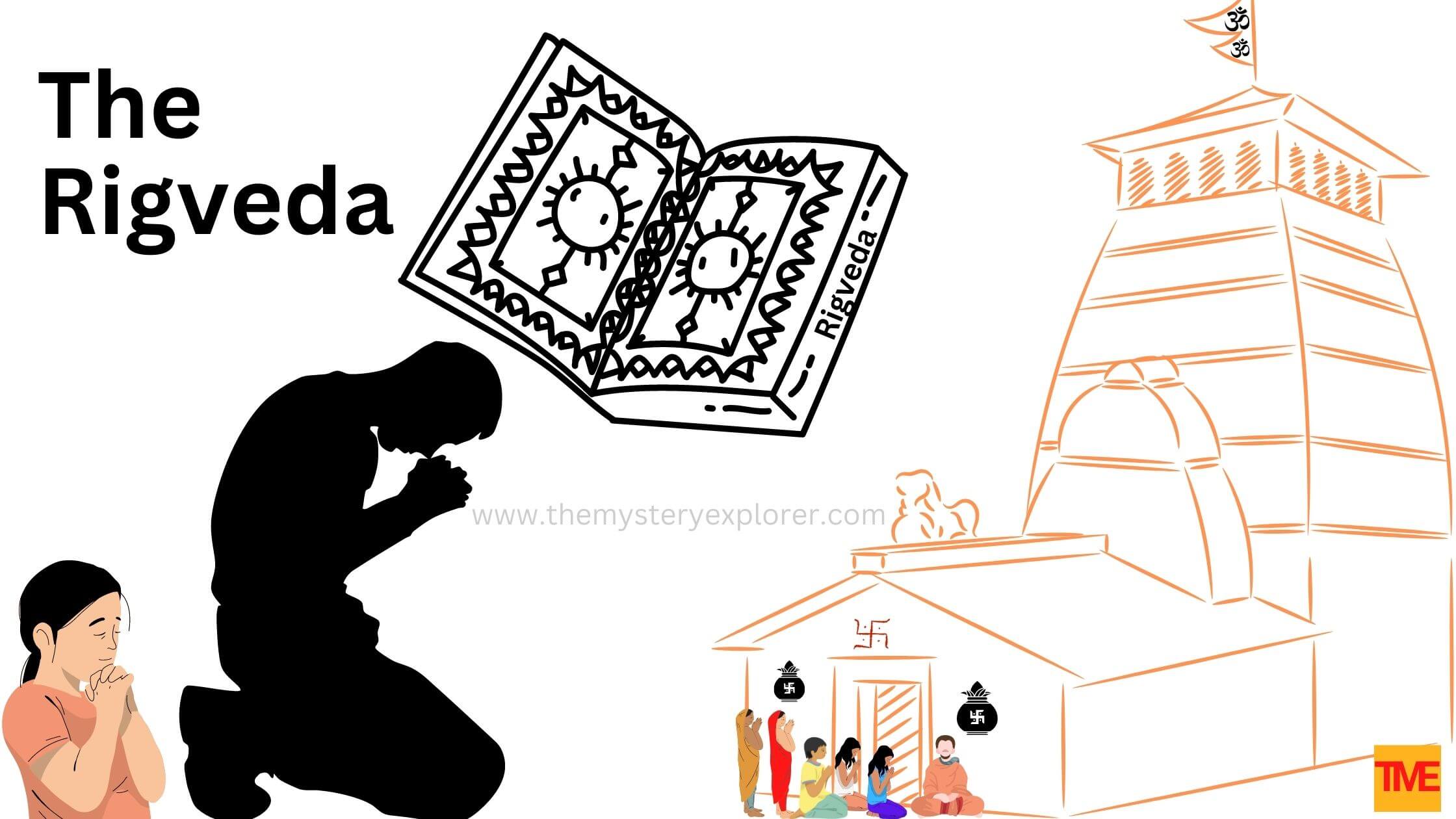The Rigveda is an ancient Indian collection of Vedic Sanskrit hymns. It is one of the four canonical sacred texts of Hinduism known as the Vedas. The text is a collection of over 1,000 hymns and 10,600 verses, organized into 10 books. The hymns are dedicated to various deities, primarily the Vedic supreme god Indra and the goddess Vak. The Rigveda is one of the oldest extant texts in any Indo-European language, and it is thought to have been composed during the early to mid-2nd millennium BCE. The Rigveda is primarily a religious text, and it contains hymns, incantations, and rituals that were used in the worship of the Vedic gods. The hymns are written in a highly poetic and metaphorical style, and they often make use of elaborate similes and metaphors to describe the divine powers and qualities of the gods. The hymns are also filled with references to natural phenomena, such as the sun, moon, and stars, as well as to various animals and plants.

The Rigveda is divided into 10 books
The Rigveda is divided into 10 books, known as mandalas. The first and second mandalas contain the oldest and most important hymns, while the remaining mandalas contain hymns that are thought to be of a later date. Each mandala is further divided into hymns, known as suktas, which are grouped according to the deity or deities to whom they are dedicated.
The Rigveda contains hymns that are dedicated to a wide range of deities, including Indra, the god of war and thunder; Agni, the god of fire; and Soma, the god of the moon and of intoxicating drinks. Other important deities include Varuna, the god of the sky and of moral order; Vayu, the god of the wind; and Rudra, the god of storms and of the hunt. There are also hymns dedicated to the goddesses Ushas, the dawn; Aditi, the mother of the gods; and Vak, the goddess of speech.
In addition to the hymns, the Rigveda contains a number of other types of texts, including the Samhitas, which are collections of mantras and rituals used in the performance of sacrifices; the Brahmanas, which are texts that provide instructions for the performance of the sacrifices and the interpretation of the hymns; and the Aranyakas, which are texts that contain allegorical and symbolic explanations of the sacrifices and the hymns.
The first mandala of the Rigveda is the oldest and most important part of the text. It contains 191 hymns and is dedicated to a wide range of deities, including Indra, Agni, and Soma. The second mandala contains 43 hymns and is also dedicated to a variety of deities, including Indra, Agni, and Soma, as well as the Maruts, the Asvins, and Varuna. The third mandala contains 62 hymns and is dedicated to deities such as Indra, Agni, Soma, the Maruts, the Asvins, and Mitra and Varuna. The fourth mandala contains 58 hymns and is dedicated to deities such as Indra, Agni, Soma, the Maruts, the Asvins, and Rudra.
The remaining mandalas of the Rigveda contain fewer hymns and are generally thought to be of a later date than the first four mandalas. The fifth mandala contains 87 hymns, the sixth mandala contains 75 hymns, the seventh mandala contains 104 hymns, the eighth mandala contains 103 hymns, the ninth mandala contains 114 hymns, and the tenth mandala contains 191 hymns. These mandalas are also dedicated to a wide range of deities, including Indra, Agni, Soma, the Maruts, the Asvins, and a variety of other gods and goddesses.
The Rigveda is an important text in the Hindu tradition, and it is widely studied and revered by Hindus. It is also an important source of information for scholars of ancient Indian history, religion, and culture. The text has been translated into a number of languages, and it continues to be an important part of Hindu worship and devotion.
Conclusion Overall, the Rigveda is an important and influential text in the Hindu tradition, and it continues to be an important source of knowledge and inspiration for Hindus around the world.
To subscribe our family in English Click Here
To subscribe our family in Hindi Click Here
